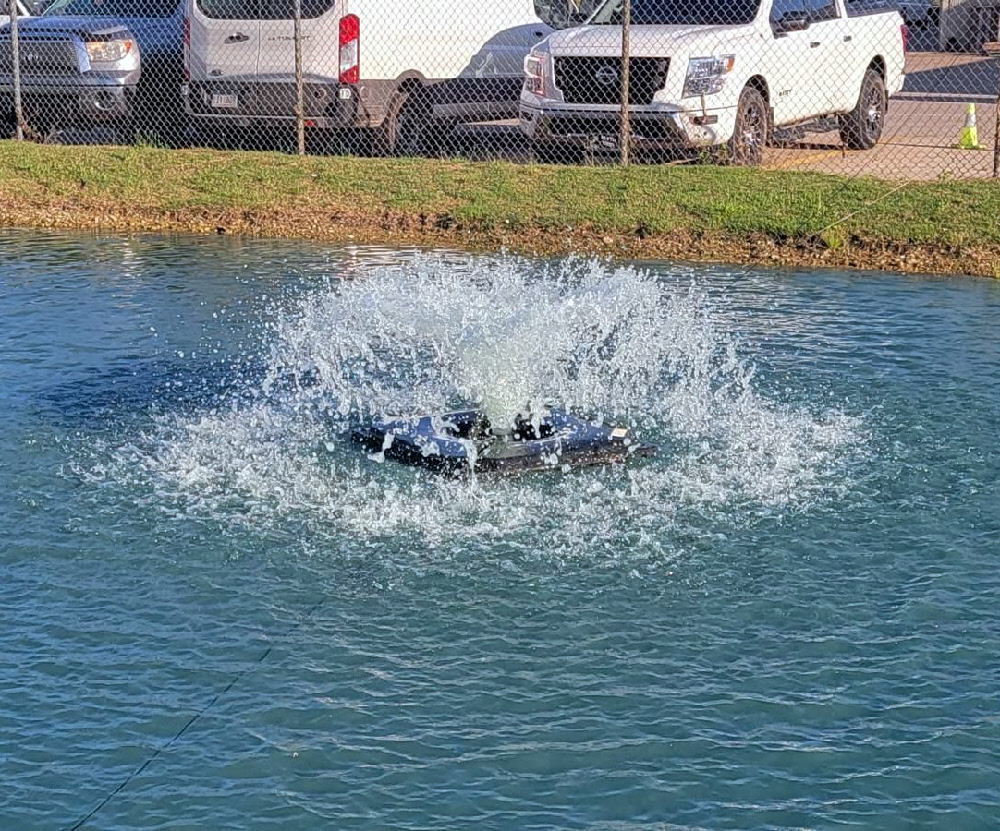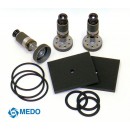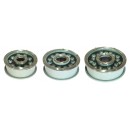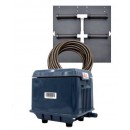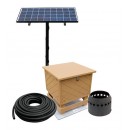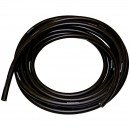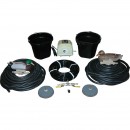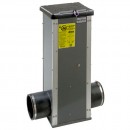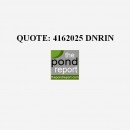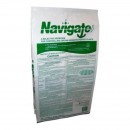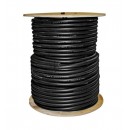Shopping Cart
0 item(s) - $0.00- Pond Sealant
- Aeration Systems
- Air Pumps & Compressors
- Algae Control
- Algaecides & Herbicides
- Bacteria & Clarifiers
- DC Compressors & 12V Pumps
- Diffusers & Airstones
- Dock Bubblers & Deicers
- Dyes & Colorants
- Fountains
- Large Ponds & Lakes
- Muck Removal
- Nozzles & Fountain Heads
- Pond Liner
- Pond Pumps
- Tubing & Accessories
- Water Level Control & Gates
- Water Treatments
- Windmill Aeration
- Commercial & Industrial Supplies
- Solar Aeration
-
Information & Articles
- - Aeration: The Key To Success
- - Air Compressors: Rotary Vane
- - Air Pumps: Linear or Diaphragm
- - Airline & Tubing for Aeration Systems
- - Algae Control
- - Aquatic Plants & Weeds in Ponds
- - Building A Dock Bubbler System
- - Building A Pond: The Basic Steps
- - Calculating Dissolved Oxygen Levels
- - Compost Aeration & Compost Tea
- - Diffusers: The Key To Efficient Aeration
- - Dock Bubblers & Deicers
- - Duckweed Control
- - Fountain For Ponds, Lakes & Small Gardens
- - Grease Trap Bacteria & Enzymes
- - Mosquito Control in Ponds
- - Muck: Removing Sludge & Pond Muck
- - Pond Aeration Systems
- - Pond Dyes: Aesthetics & Growth Control
- - Pond Liners
- - Pond Pumps: Submersible & External
- - Pond Winterization: Prepare Your Pond for Winter
- - Septic Bacteria Treatments
- - Solar Aeration, Solar Pumps & Solar Systems
- - Solar Aerator Parts List
- - Solar DC & 12V Pumps
- - Weeds & Eurasian Milfoil
- - Windmill Aeration & Windmill Pumping
- - Winterization of Ponds and Lakes
- - Beneficial Bacteria: Helping A Pond Naturally
- - Algae: Basics of Pond Algae
- - Oxygen Transfer Rates, SOTR & Pumping Rates of Aeration Systems
- - Pond Weed & Algae Control
- - Questions & Answers
- - Waterfalls: Building a Waterfall
- - Weighted Airhose, Airline & Tubing for Ponds
- - Links to Suppliers & References
- Consultations & Design Assistance
- Books & Guides
- Links & Resources
Oxygen Transfer Rates, SOTR & Pumping Rates of Aeration Systems
|
How much oxygen is your aerator really going to deliver and what is the pumping rate. Aeration systems make claims about the oxygen transfer rate and how many pounds or kilograms of oxygen are added per hour or per kilowatt. This can be a very effective way to compare the efficiency of an aeration system based on the biological oxygen demand of the system. A small pond with trout or bass will have a different BOD (biological oxygen demand) compared to a wastewater treatment system. In some cases a bottom mounted diffuser aeration system can be the most efficient choice but in other applications a large surface paddlewheel aerator might be required to meet requirements. Standard Oxygen Transfer Rates Most commercial-grade aerators and diffuser systems have been laboratory tested to determine their SOTR (Standard Oxygen Transfer Rate) but the resulting SOTR ratings are based on fairly narrow criteria usually when test water has zero dissolved oxygen and at a defined temperature. In real world applications the advertised SOTR can almost never be expected because the actual rate of oxygen transfer is temperature and existing D.O. (Dissolved Oxygen) concentrations. Any aerator or diffuser will only provide its measured (advertised maximum) oxygen transfer rate when the dissolved oxygen levels in the water are at zero or close to zero. This chart will help estimate the actual oxygen transfer an aerator will give when there is already oxygen in the water.
If the pond temperature is 77°F (25°C) and the dissolved oxygen level is 5 Parts Per Million (PPM) or 5 mg/l, an aerator system or diffuser that is rated at 3 pounds of oxygen per hour will really only provide 35% of the advertised SOTR or around 1.05 pounds of oxygen per hour (3 lbs x 35 percent = 1.05 lbs). If a pond temperature is 68°F (20°C) and the dissolved oxygen level is 7 Parts Per Million (PPM) or 7 mg/l, an aerator system or diffuser that is rated at 3 pounds of oxygen per hour will really only provide 19% of the advertised SOTR or around 0.57 pounds of oxygen per hour (3 lbs x 19 percent = 0.57 lbs). Low oxygen concentrations can be damaging to a variety of critical life stages of aquatic animals, including larval invertebrates, and fish eggs and fry. Like temperature, organisms differ in their tolerance to low dissolved oxygen levels. The ideal dissolved oxygen level for fish is between 7 and 9 milligrams per liter (mg/L); most fish cannot survive at levels below 3 mg/L of dissolved oxygen. Some published guidelines suggest dissolved oxygen concentrations must not decline below 5 mg/L and should not average less than 6.5 mg/L over a seven-day period. However, the guidelines also require that dissolved oxygen concentrations remain above 9.5 mg/L in areas where early life stages of aquatic biota, particularly fish, are present. Anoxic (depleted oxygen) conditions can result in fishkills, which is particularly common during harsh winters with extended ice-cover. When fish are not a concern such as a wastewater treatment facility or leachate pond, where the main concern is to ensure the BOD is adequately addressed by the chosen aeration system, different criteria will apply and take a priority role in importance when deciding if bottom diffusers, surface aerators or some sort of jet or aspiration aerator or paddlewheel type aerator will make the most sense.
Diffused Air Aerators Systems These aerators are also called lake-bed aerators or bottom-mount diffusers and basically use a shore-mounted air blower or compressor type air pump to push air into multiple diffusers placed at the bottom of a pond, lake or wastewater tank. Diffused bottom aeration is probably the most common form of aeration in ponds and lakes and can also be effective in wastewater basins and holding tanks. Air is forced through a diffuser system which breaks up the airflow into bubbles. Depending on the matrix or make-up of the diffuser the bubbles will be fine bubbles less than 0.5 millimeters in diameter or more coarse bubbles above 2 millimeters Some of the more popular aeration systems in North America harness the efficiency of the disc diffusers as part of their bottom mount, or lake-bed, diffuser system. Diffuser discs come in various sizes; the most common sizes are the 9 inch diffuser disc and the 12 inch diffuser disc. These diffuser discs can be arranged on proprietary weighted bases according to manufacturer or individually weighted or affixed via lengths of weighted airline to mainline header systems with valves tapped-off a main header. Diffuser discs have an integrated check-valve system to prevent backflow of liquids into feeder lines. Fine Bubble diffuser discs membranes are made of EPDM (ethylene propylene diene monomer), silicone or PTEE (PolyTetraFluoro Etyhylene) layered combinations. Lake and pond diffuser assemblies typically use EPDM diffuser discs as they are generally used in fairly benign, low-organic situations in fairly clean waters so they are able to resist fouling quite well. Wastewater systems, leachate ponds, compost reduction basins or storm water retention ponds often have higher levels of organics and dirty effluent which can cause issues with these diffusers and a more specialized diffuser is needed. Establishing a SOTR (Standard Oxygen Transfer Rating) rating for a diffuser device or to pinpoint a precise SAE (Standard Aeration Efficiency) for a bottom mounted or lake-bed diffuser aeration system is not easy. The SAE (Standard Aeration Efficiency) of air diffusers is generally between 0.5 and 1.5 pounds per horsepower per pound (1.0 - 2.0 lb/O2/hp-hr). High efficiency air stones which can create finer bubbles have higher SAE closer to 3.0 pounds of oxygen per horsepower per hour. Understanding the needs of your aquatic system will help you best choose the diffuser system that will be most cost-effective for your project. Depth of the diffuser placement will dictate the PSI (Pounds per Square Inch) requirements of your compressor or blower. Compressors and blowers have limited airflow and pressure thresholds and tubing lengths can further impact the final diffuser performance. In deeper ponds and lakes over 10 foot depth the best aeration efficiency and oxygen transfer will be with a bottom mount diffuser system. Rotary vane or piston compressors can provide adequate airflow in the most common situations and if higher airflow and pressure is necessary then a rotary screw compressor. It is important to recognize and understand the differences between reciprocating, carbon vane, rotary centrifugal, regenerative blower and rotary screw compressors as they all have specific strengths and weaknesses. To maximize the efficiency of a diffuser system and to get the most pounds of oxygen per horsepower per hour from the diffuser you need to ensure the air blower system is tailored to your specific job.
Battery Free operation. We have eliminated the expense of rechargeable batteries and charge controllers by offering a direct drive (DD) aeration system. This reduces your cost along with the maintenance issues associated with a lot of extra components. Each system includes 2 panels with aluminum mounting brackets and adjustable pole bracket with variable angle configuration, compressor(s), an OWS DD solar controller module, heavy duty steel cabinet with locks, mounting pole, solar power disconnect switch, cooling fans, pressure gauge and a pressure relief valve. Each DD solar aerator can be operated by itself and totally independent of other aeration systems or it can be combined with a windmill aeration system to give you a longer operating time each day. It can also be combined with an electric aerator or windmill and electric aerator combo.
One interesting benefit of using land-based blowers or air compressor systems for pond aeration is the reduced underwater noise levels of diffuser systems when compared to surface aerators. More and more research is focused on understanding the impact of extraneous noise on aquatic creatures. Measurements conducted under water are raising red flags about the noise produced by devices such as paddle wheels, agitators, airlifts and drilled pipe homemade DIY diffusers or spargers. In non-living systems (cement basins or oil field tailing ponds) this extraneous noise is not an issue.
If a diffuser placed at 5 foot depth is rated to pump or circulate 500 gallons per minute with airflow of 2 CFM, the same diffuser at a depth of 12 feet might have a pumping capacity of 1500 gallons per minute with the same airflow of 2 CFM. This is why bottom mounted, lake-bed diffusers are typically used in deeper situations. If you need to aerate a large pond that has 2.3 million gallons (approximately an acre sized pond average 7 feet deep) and you want to do a complete turnover of the total pond volume every 24 hours, you need to look at the pumping rates of your chosen diffuser at depth and determine how many diffusers will do the job. If each of your diffusers has a rated pumping capacity of 1000 Gallons Per minute with 2 CFM (Cubic Feet per Minute) of airflow then that single diffuser would theoretically be able to do a complete pond turnover in around 38.5 hours. (2,300,000 gallons divided by 1000 gallons per minute = 2300 minutes = 38.3 hours to pump 2.3 million gallons). If you used two diffusers for a total pumping capacity of 2000 gallons per minute you would be able to do a full volume mix of the pond in 1150 minutes or 19.2 hours. If you used three diffusers for a total pumping rate of 3000 gallons per minute you could do the complete pond turnover in 767 minutes or 12.8 hours. So with three diffusers and 6 CFM you can pump the full volume of an acre pond in close to 12 hours. Keep in mind that the depth and shape of your pond will have an impact on total pumping rates and just how thorough the mixing of the pond is; stagnant pools can exist in ponds where the water won't be moved unless correct placement of the diffuser takes these dead zones into account. Smaller bubbles are better bubbles Let's have a brief lesson in fine bubbles, it will be fun (well...not exactly) and you will get a short course in why smaller is sometimes better especially when it comes to diffuser bubbles! Lesson 1 - Let's take a fairly large bubble as far as aeration goes. Our large galloping bubble that is 0.8" in diameter, just over 3/4 of an inch, or 20 mm has a full volume of 1.64 cubic inches or 4.19 cubic centimeters. This same glorious orb has a surface area of 5 inches or 12.6 square centimeters and that is what we can define as a coarse bubble! Lesson 2 - Now a coarse diffuser like an airstone would create large bubbles like in lesson one but if we could use the same volume of air but break that large sphere into smaller ones we could greatly increase the available surface area which in turn enhances and embellishes the aeration transfer capacity of the same air volume! If we replaced that one large 3/4" wide bubble with tiny bubbles or micro-bubbles that were 1/16 of an inch or 3 mm in diameter we could fit 296 of these fine bubbles into the larger one of lesson 1! The combined surface area of those 296 bubbles works out to over 33 square inches or 84 square centimeters! This is close to 7 times the total surface area...and the surface is where the oxygen transfer occurs. Lesson 3 - Now since the surface area is close to 7 times greater we can theoretically aerate 7 times as much water with the same compressor or blower or air pump depending on whether we have a fine bubble diffuser or a coarse bubbler. Same air pump, totally different efficiency!! Surface Aerators Surface aerators usually consist of a submersed motor suspended from a float that drives an angled prop to create a frothing oxygen transfer boil on the surface. In smaller ponds and aquaculture tanks these are often retail units between ½ HP and 5 HP. Larger models up to 300 HP are used by commercial applications and wastewater treatment. A basic calculation for oxygen transfer requirements or inadequate surface aerator is to allow at least ½ HP of an efficient surface aerator for every million gallons of pond volume. This is only a guide used in smaller ponds. High density fish ponds or ponds with a higher BOD should calculate at least ¾ HP per million gallons. The most efficient small-scale surface aerators will have an oxygen transfer rate based on standard aeration efficiency (SAE) of 3 pounds per hour per horsepower. This oxygen transfer rate will depend on motor efficiency and important factors like pond depth and temperature. As we see in the chart below, a manufacturer's listed oxygen transfer rate of 3 pound per hour per horsepower will depend on the starting oxygen rate (either PPM or mg/litre) of the water. If this surface aerator is put into a pond that has an existing Dissolved Oxygen (D.O) rate of 5 PPM or 5 milligrams per litre and the temperature of the water is 59 degrees F (15 degrees Celsius) the actual oxygen transfer rate of the quoted 3 pounds per HP per hour aerator will only be 46% of the listed efficiency or 1.38 pounds of oxygen per hour per horsepower (HP). The pumping rates of surface aerators and fountains are usually somewhat lower than bottom diffuser systems. A typical medium sized surface aerator from 1 to 7.5 HP which uses a propeller system and a float will circulate anywhere from 200 to 3000 gallons per minute. The energy required to run a 7.5 HP surface aerator to move 3000 gallons per minute would be more than would be required for a diffuser system which might be able to move the same volume of water with a 1/3 HP air pump and three diffusers. A surface aerator would be a poor choice for a large or deep pond. It will continue to pump basically the same water over and over again, adding no oxygen where it is needed, because it is not moving water away from the aerator. Paddlewheels or aspirator type surface systems would be better suited when the movement of the oxygenated water away from the aeration device is important. For the smaller scale surface aerator we use Kasco Marine surface aerators or Aquamaster Surface Aerators or Scott Aerators or any of the many popular retail brands.The typical application include commercial aquaculture, agricultural ponds, industrial plants, municipal waste water and backyard ponds. These units are typically selected for surface aeration when a decorative fountain pattern is neither necessary nor desired, many pond aerators are self-contained, lightweight units that float at the surface with a single power cord returning to shore and two or three mooring lines anchoring the unit. The units are easily installed and maintained by a single person and have proven to be an excellent choice for both continuous duty pond and lake aeration and supplemental aeration for unique applications. Paddle Wheel Surface Aerators Paddlewheel aerators are surface aerators consisting some sort of motor, electric, diesel, gas powered or tractor power takeoff that is attached to a floating structure and paddles attached to the motor hub or shaft which spin and splash at the water surface to create aeration. By increasing the diameter of the paddles the oxygen transfer rate can be increased; other important variables are the specific depth of the blades as well of the angle of the paddles. By increasing motor speed and hub rotation the oxygen transfer rate is also incrementally enhanced. A tractor powered takeoff (PTO) can have very high SOTR (Standard Oxygen Transfer Rate) as much as 90 pounds of oxygen per hour which means they can be important as an emergency aeration supply but the drive-train and drive-shaft of such systems drain efficiency and they are not at all energy efficient beyond emergency aeration. The more efficient three-phase or 3-phase power paddle wheel aerators have a SAE of between 3.5 and 6 pounds of oxygen per HP per hour. This high SAE, combined their ability to de-stratify through rapid circulation makes this type of aerator very popular with aquaculture around the world. Aspiration and Jet Aerators This is another surface mounted aeration device that is very good at adding aeration and circulation to a pond or basin. They use a submersed propeller that creates a vacuum effect and draws air through intake ports into a hollow shaft that is dispersed in a large plume of fine bubbles (about 2 mm in diameter) throughout the water. The angle of attack can be adjusted with simple altering of the float brackets. The aspiration propeller aerators are extremely quiet as there is no water boil at the surface like a standard surface aerator; all of the mixing is below the surface. Motors can range from 1 to 100 HP and above. Multiple units can be deployed in basins to ensure there are no stagnant dead spots. This creates a flow linkage that disperses and mixes the oxygen evenly through the pond and ensures an effective circulation. The SAE is approximately 2.0 - 3.0 LB/O2/hp-hr.
| |||||||||||||||||||||||||||||||||||||||||||||||||||||||||||||||||||||||||||||||||||||||||||||||||||||||||||||||||||||||||||||


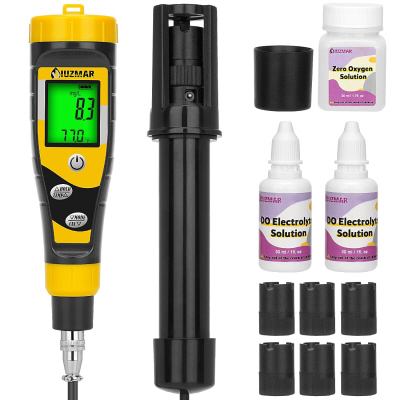 Dissolved Oxygen DO Meter Kit
Dissolved Oxygen DO Meter Kit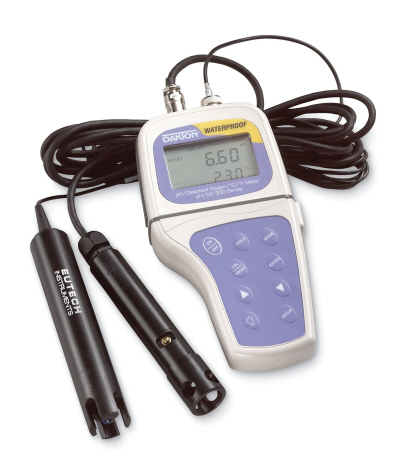 Oakton Dissolved Oxygen Meter with Probe
Oakton Dissolved Oxygen Meter with Probe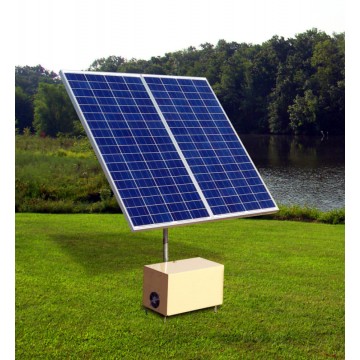 Solar Direct Drive 12 Volt DC Solar Aeration Systems
Solar Direct Drive 12 Volt DC Solar Aeration Systems